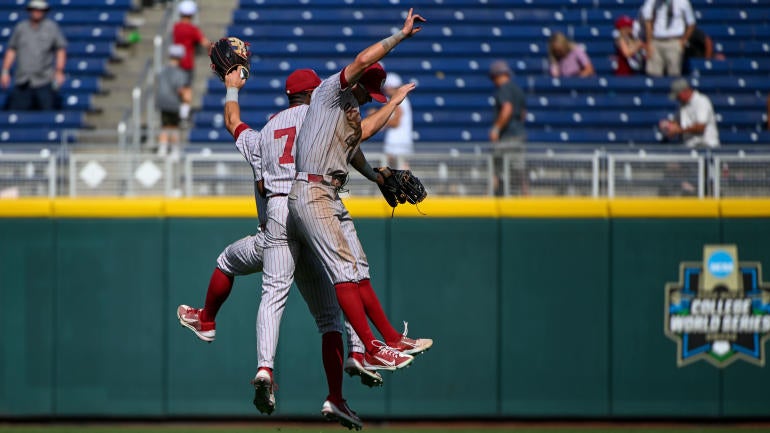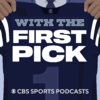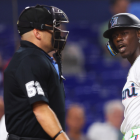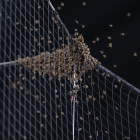
The 2022 College World Series gets underway on Friday at Omaha's Charles Schwab Field. Although the CWS is increasing in popularity and drawing more and more attention and eyeballs, it's still a bit unfamiliar to some casuals. So in the ongoing interests of being there for those with nowhere left to turn, we have put together a brief primer on this year's CWS. Better still, we have done so by means of the timeless FAQ format that is a hallmark of ancient sacred texts. The first question:
Shall we begin?
Yes.
Now for the remaining questions.
How does the College World Series work?
The last eight teams standing in the NCAA Division I Baseball Tournament journey to Omaha each year for the College World Series. The format is simple -- it's double-elimination until the field is down to two teams. At that point, the slates are wiped clean, and those final two teams play a best-of-three series for the national championship.
Who are the eight teams in it this year?
In order to preempt online rage, we'll list those eight teams in alphabetical order. This year's CWS participants are Arkansas, Auburn, Notre Dame, Oklahoma, Ole Miss, Stanford, Texas, and Texas A&M. Fully half of this year's CWS field comes from the SEC, which stands to reason given that the SEC is, by a substantial margin, the strongest conference in college baseball (and has been for some time). Bear in mind that two other 2022 CWS teams -- Oklahoma and Texas -- will be joining the SEC, possibly as early as 2024.
How did those eight teams make it to Omaha?
First, here's how the first two "rounds" of the 64-team NCAA DI Baseball Tournament, known as the regionals and super regionals, work. In the regionals, the 64 teams – 31 automatic bids via conference championships and 33 at-large entrants – are broken up into 16 regionals of four teams each. The regionals are a double-elimination format that continues until only one team is left in each of those 16 brackets. Those 16 teams pair up and advance to the super regionals. The super regionals are best-of-three series, and the winner of each advances to the College World Series.
Now here's how this year's eight CWS teams made it to Omaha:
- Arkansas: Advanced out of Stillwater regional that also included Oklahoma State, Missouri State, and Grand Canyon. Defeated North Carolina in the super regional.
- Auburn: Advanced out of Auburn regional that also included Florida State, UCLA, and Southeastern Louisiana. Defeated Oregon State in the super regional.
- Notre Dame: Advanced out of Statesboro regional that also included Georgia Southern, Texas Tech, and UNC-Greensboro. Defeated Tennessee in the super regional.
- Oklahoma: Advanced out of Gainesville regional that also included Florida, Central Michigan, and Liberty. Defeated Virginia Tech in the super regional.
- Ole Miss: Advanced out of Coral Gables regional that also included Miami-FL, Arizona, and Canisius. Defeated Southern Mississippi in the super regional.
- Stanford: Advanced out of Stanford regional that also included UC-Santa Barbara, Texas State, and Binghamton. Defeated UConn in the super regional.
- Texas: Advanced out of Austin regional that also included Air Force, Louisiana Tech, and Dallas Baptist. Defeated East Carolina in the super regional.
- Texas A&M: Advanced out of College Station regional that also included TCU, Oral Roberts, and Louisiana. Defeated Louisville in the super regional.
Any notable teams who didn't make it?
Yep: Mississippi State and Tennessee. Mississippi State is the reigning national champ, but they fell well short of expectations this season and didn't even make the field of 64. That means we still haven't had a repeat national champion since South Carolina won it all in 2010 and 2011.
Also absent from Omaha this year is Tennessee, who entered the tournament as the No. 1 overall seed. Given that they went 57-9 this season while playing in the SEC, the Volunteers had they won it all would likely be remembered as one of the great teams of all-time. Instead, Notre Dame stunned them in three games in the super regional.
What's the schedule?
For the opening games, it goes a little something like this:
Games on ESPN, ESPN2 and ESPNU can be streamed on fuboTV (try for free).
Friday, June 17
- Oklahoma vs. Texas A&M, 2 p.m. ET, ESPN
- Notre Dame vs. Texas, 7 p.m. ET, ESPN
Saturday, June 18
- Arkansas vs. Stanford, 2 p.m. ET, ESPN
- Ole Miss vs. Auburn, 7 p.m. ET, ESPN2
Further sorting out takes from Sunday through Thursday, and then the best-of-three final series begins with Game 1 on Saturday, June 25 at 6:00 p.m. CST. Game 2 will be Sunday, June 26 at 2:00 p.m., and if necessary Game 3 will be Monday, June 27 at 6:00 p.m. CST. All finals games will be broadcast on ESPN.
Any notable MLB draft prospects at this CWS this time around?
Our own R.J. Anderson has gone in-depth on each CWS team's best or at least most interesting draft prospect, so we'll point you in his direction for the full analysis. For a taste, though, here are the names to know and when they might hear their name called when the MLB Draft goes down on July 17.
- Arkansas: Cayden Wallace, 3B/OF
- Auburn: Sonny DiChiara, 1B
- Notre Dame: Jack Brannigan, 3B/RHP
- Oklahoma: Peyton Graham, SS
- Ole Miss: Hayden Dunhurst, C
- Stanford: Brock Jones, OF
- Texas: Ivan Melendez, 1B
- Texas A&M: Trevor Werner, 3B
For pure entertainment value, we'll go with the power displays of DiChiara and Melendez.
Who's the favorite to win it all?
As a rough guide, here are the CWS odds via Caesars Sportsbook:
- Texas: +350
- Stanford: +450
- Notre Dame: +500
- Arkansas: +650
- Auburn: +750
- Oklahoma: +800
- Ole Miss: +850
- Texas A&M: +900
Texas was the consensus No. 1 team coming into the season, so it's not surprising to seem them atop this particular heap. Really, though, this is baseball, and there's so much structural parity that none of these teams is any kind of a longshot in Omaha. So get set for a compelling week-plus of baseball down in the college ranks.






















